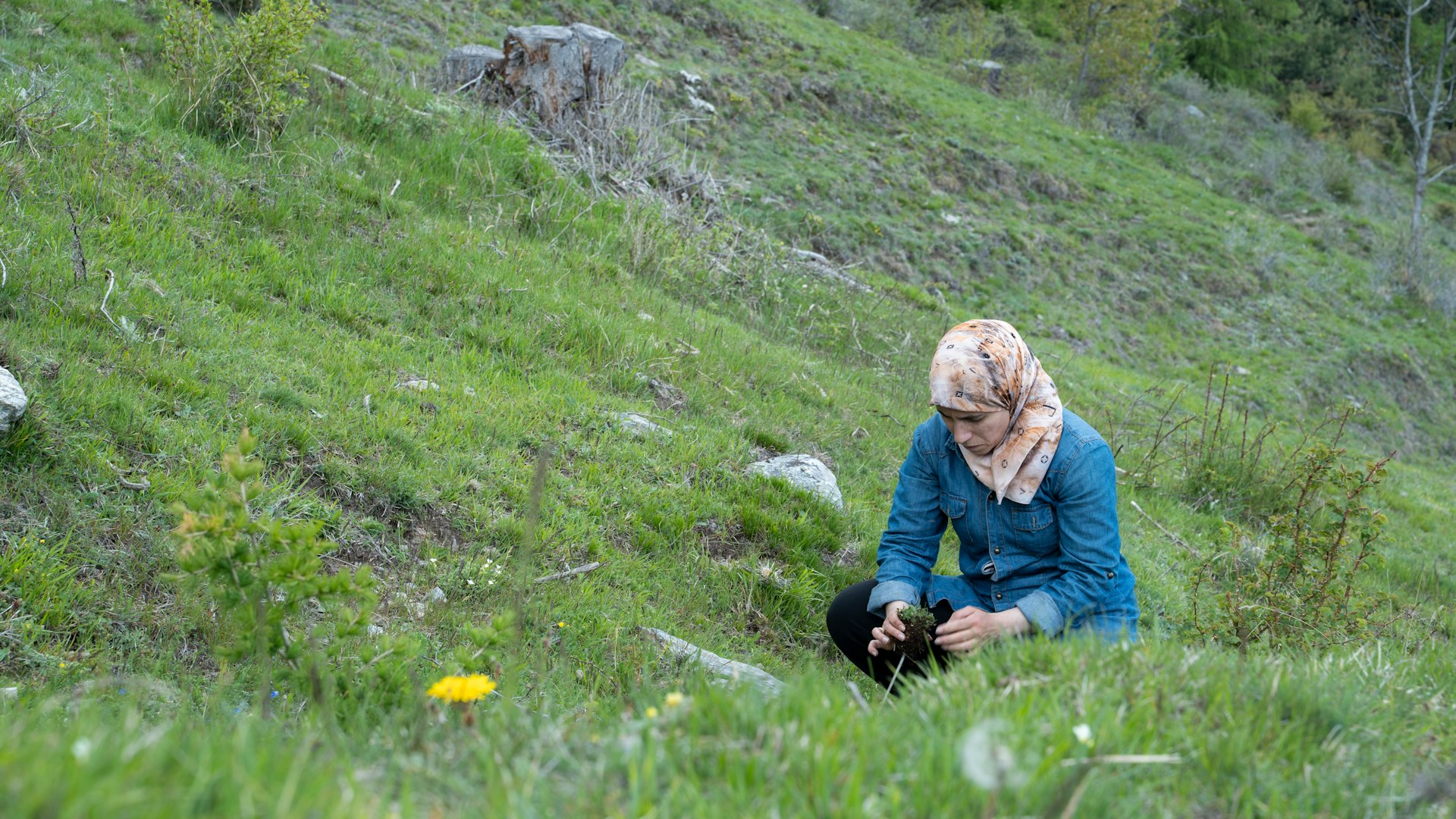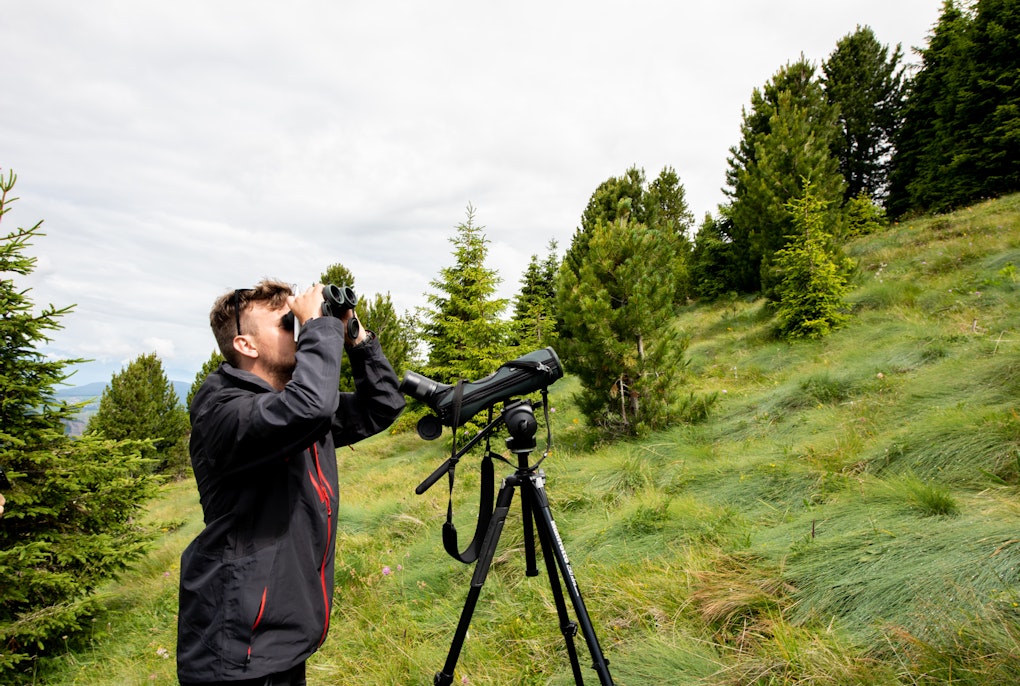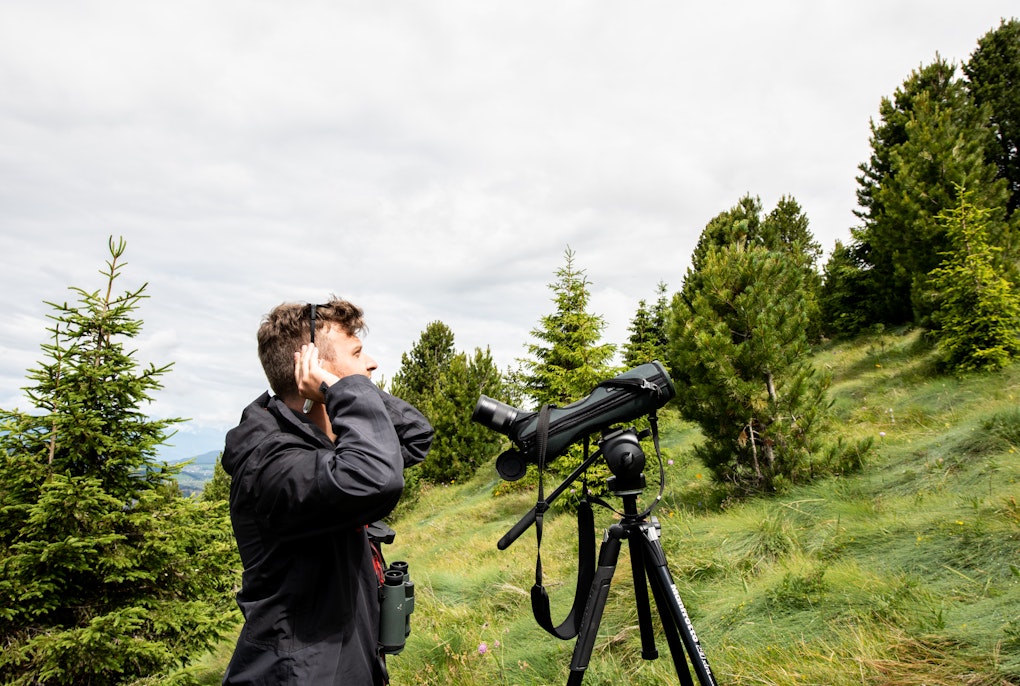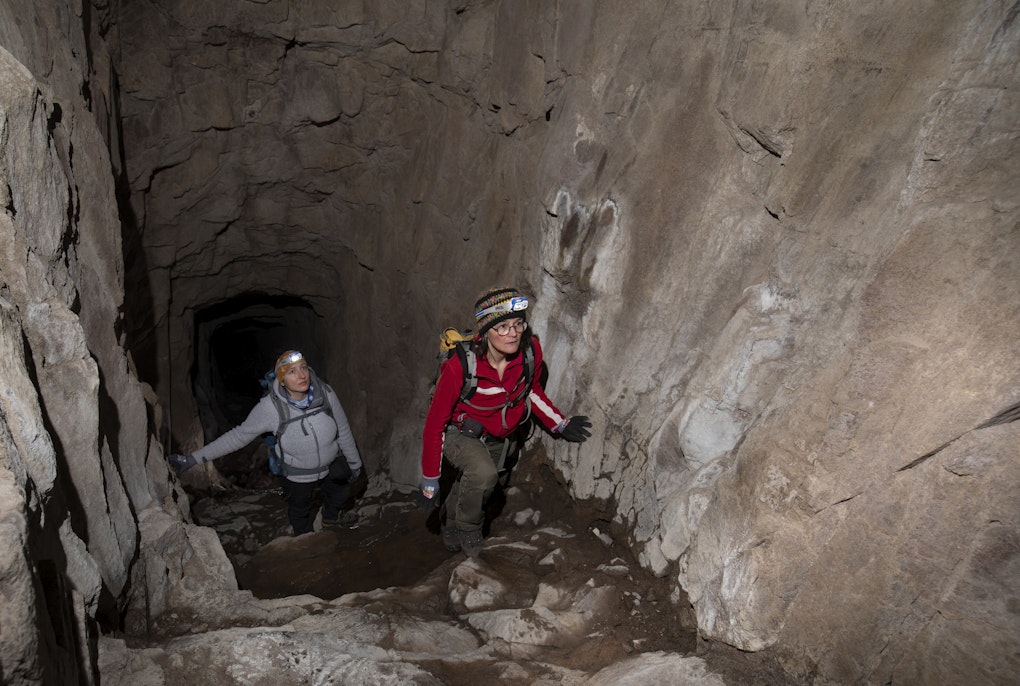magazine_ Reportage
Is the air getting too thin for plants?
The experiment on adaptation of alpine species moving to higher altitudes continues
Over the past four decades, alpine plants have been pushed to migrate upward by about 200 meters in order to protect themselves from rising temperatures. To investigate the implications, a team from Eurac Research and the Universities of Verona and Innsbruck, are taking samples of plants and studying them at different altitudes in the terraXcube. The research, one of a kind in civilian settings, focuses on the effects of pressure. The first year has yielded comforting news: the species studied are able to adapt without major difficulties. But tests are still needed to solidify the results.
“Come here, there are loads of them!” Someone shouts from behind a steep slope thirty meters away. We are in the about 1,500 m.a.s.l in the Mazia valley, a small tributary of the Venosta valley and Silvia is on her knees, her hands pointing at the ground. Some isolated larch trees on the sloping meadow and the outlines of a few cows prevent a good view of her, but as soon as she is heard, a sportily dressed group of six get up and move quickly towards her. It may look like it, but no, they are not running to pick blueberries.
Silvia Lembo, a biologist at Eurac Research, has just spotted an expanse of “hairy” clover, her jubilant shouts have caused her six fellow researchers to rush over and help collect the seedlings, pack them up and transfer them to Bolzano, where the second phase of the Upshift project is about to begin. The project investigates the effects of climate-induced plant migration to higher altitudes.
“Hairy clover is a little harder to find, but for our experiment we prefer it to the traditional variety,” explains Lembo as she uses a chisel to pull out a small clod of earth and transfer the seedling with its roots into a perforated black plastic container. “Botanically, the two plants are the same, but the little on this version the hairs form a cover that protect the leaves allowing it to retain more water, making it more resistant.” The team needs several hours to collect 120 clover samples. They crack on diligently, taking just a quick pause to perch on the rocks for a sandwich break.
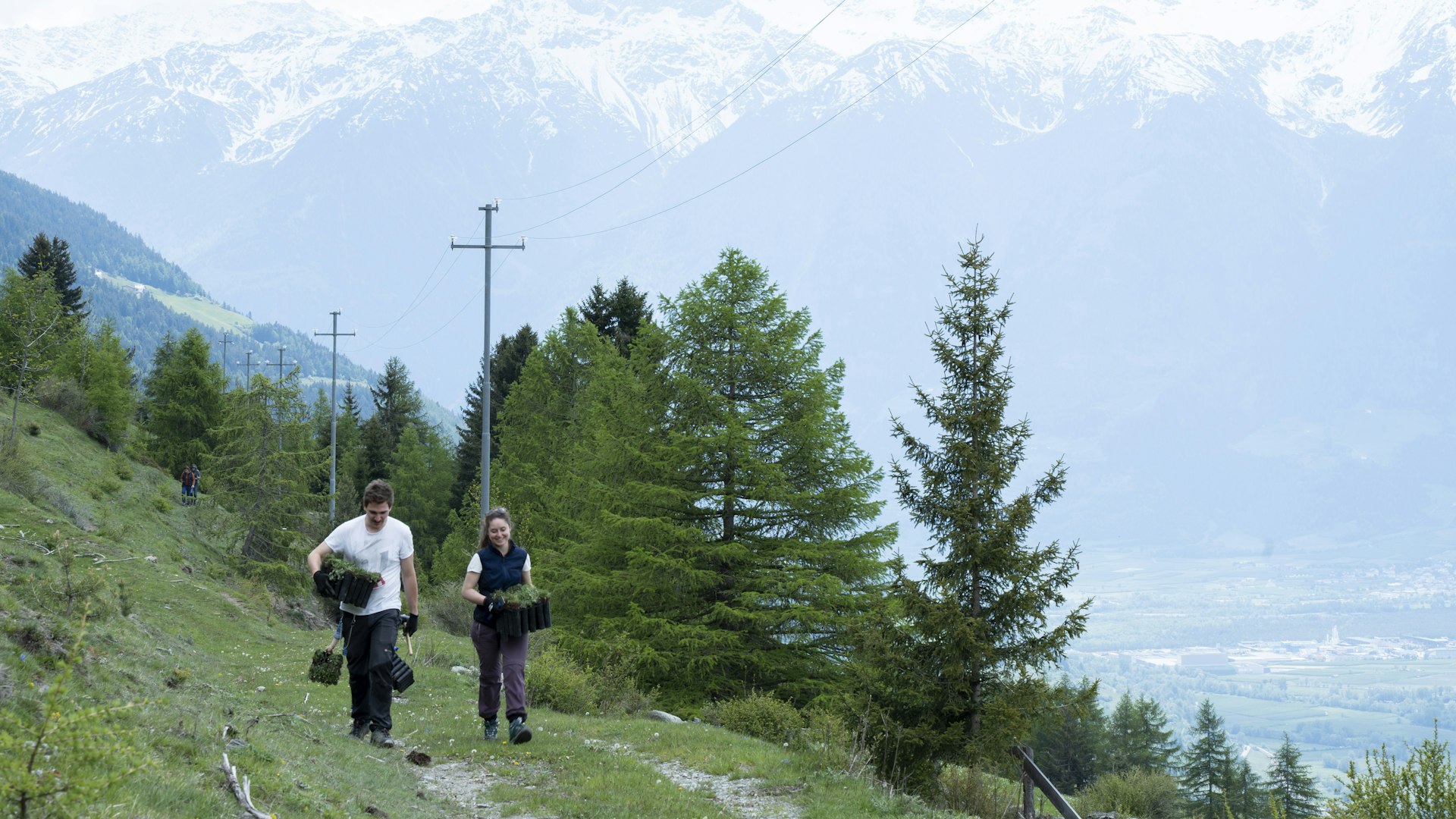 Credit: Eurac Research | Marina Baldo
Credit: Eurac Research | Marina Baldo240 seedling samples were needed for the study but a few more were collected just in case. The sampling site is located in the Mazia valley, at an elevation of 1,500 meters. In the background, the Ortler massif .
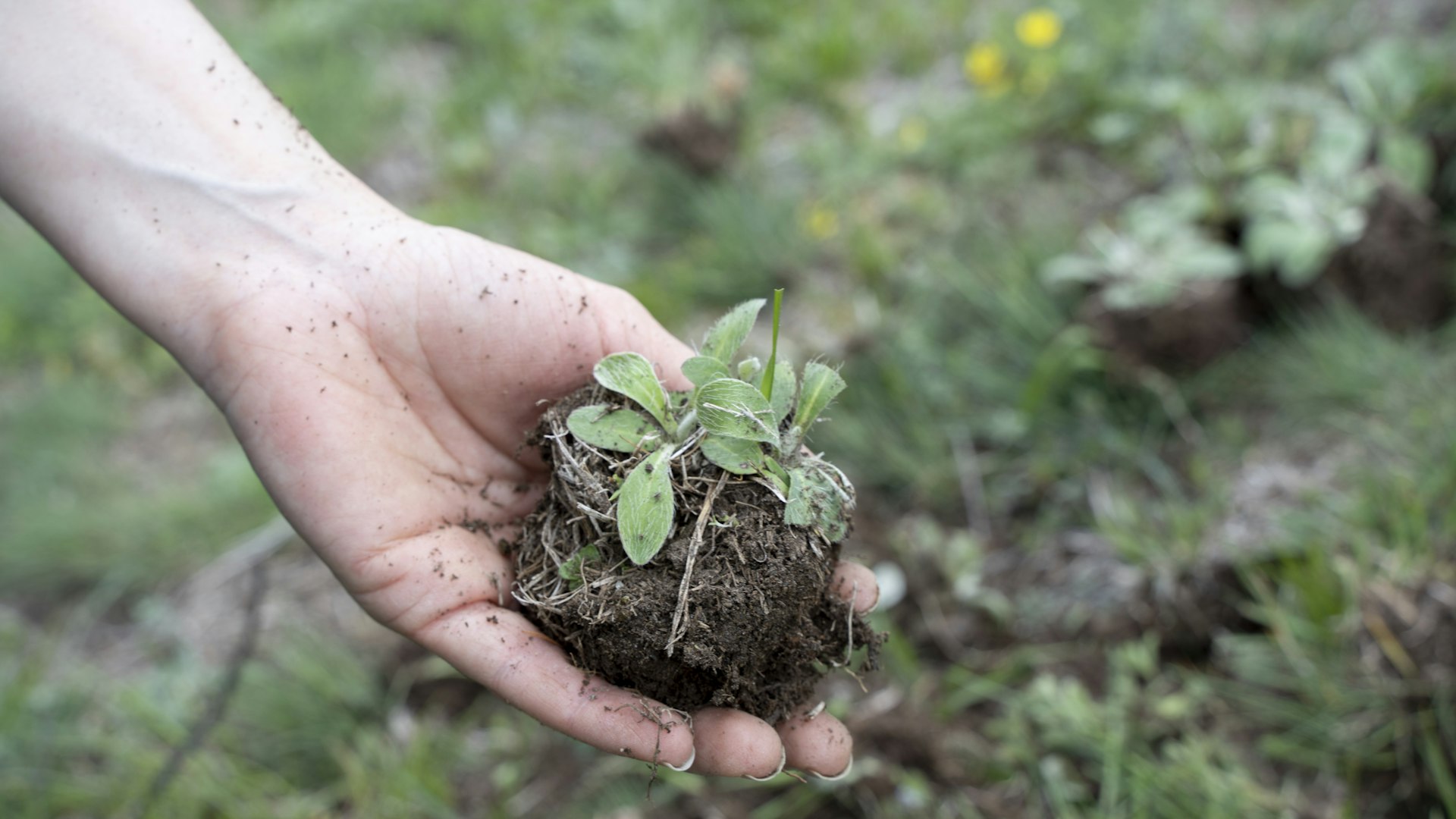 Credit: Eurac Research | Marina Baldo
Credit: Eurac Research | Marina BaldoPilosella (Hieracium pilosella) is a down-covered seedling with astringent and purifying properties, it’s deep yellow flowers look a bit like those of a dandelion.
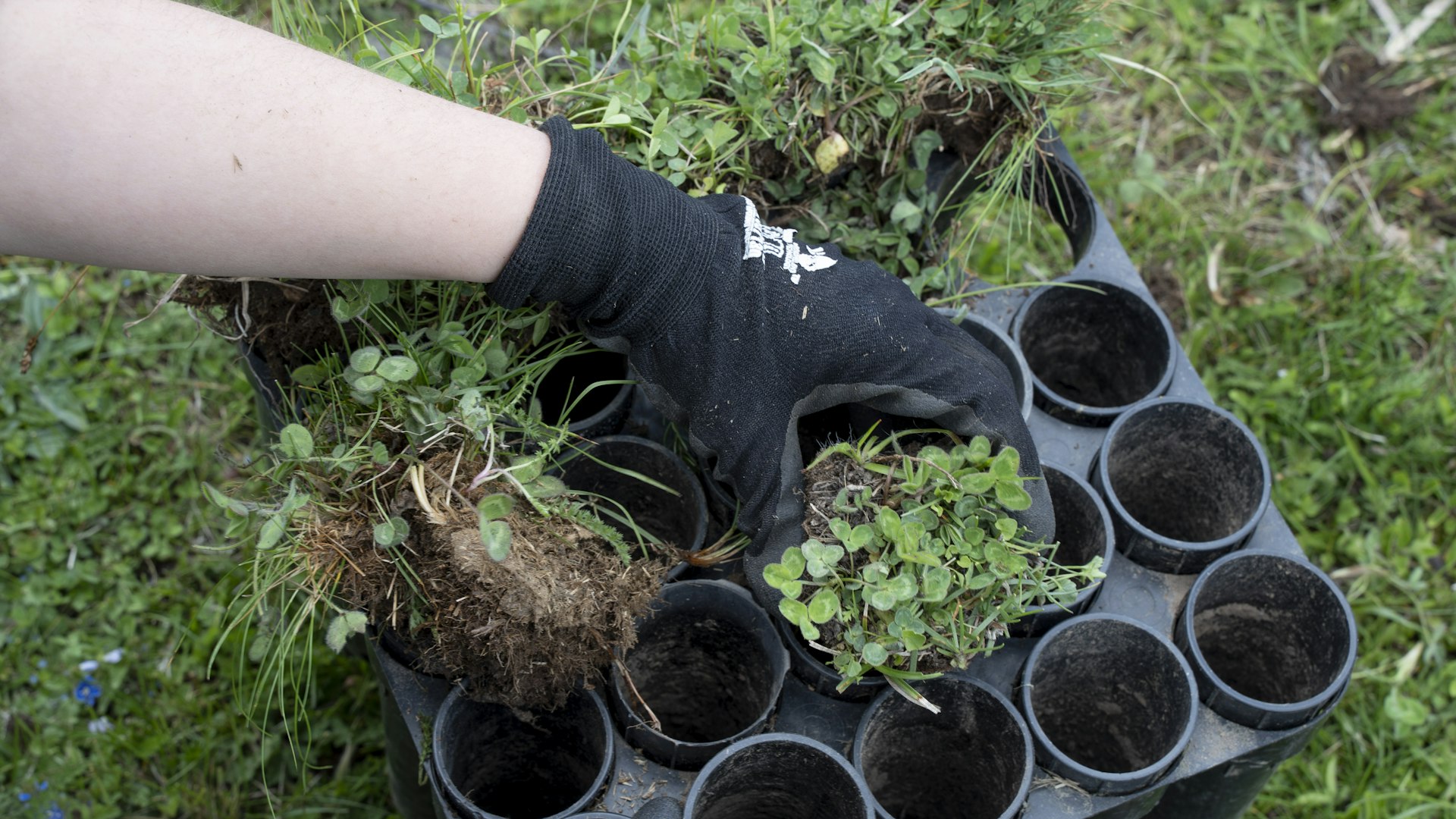 Credit: Eurac Research | Marina Baldo
Credit: Eurac Research | Marina BaldoThere are two varieties of clover: one covered with tiny hairs and one with smooth leaves. Botanically, the two are the same, but the hairs form a cover that protect the leaves and retain more water making it more resistant to climatic changes.
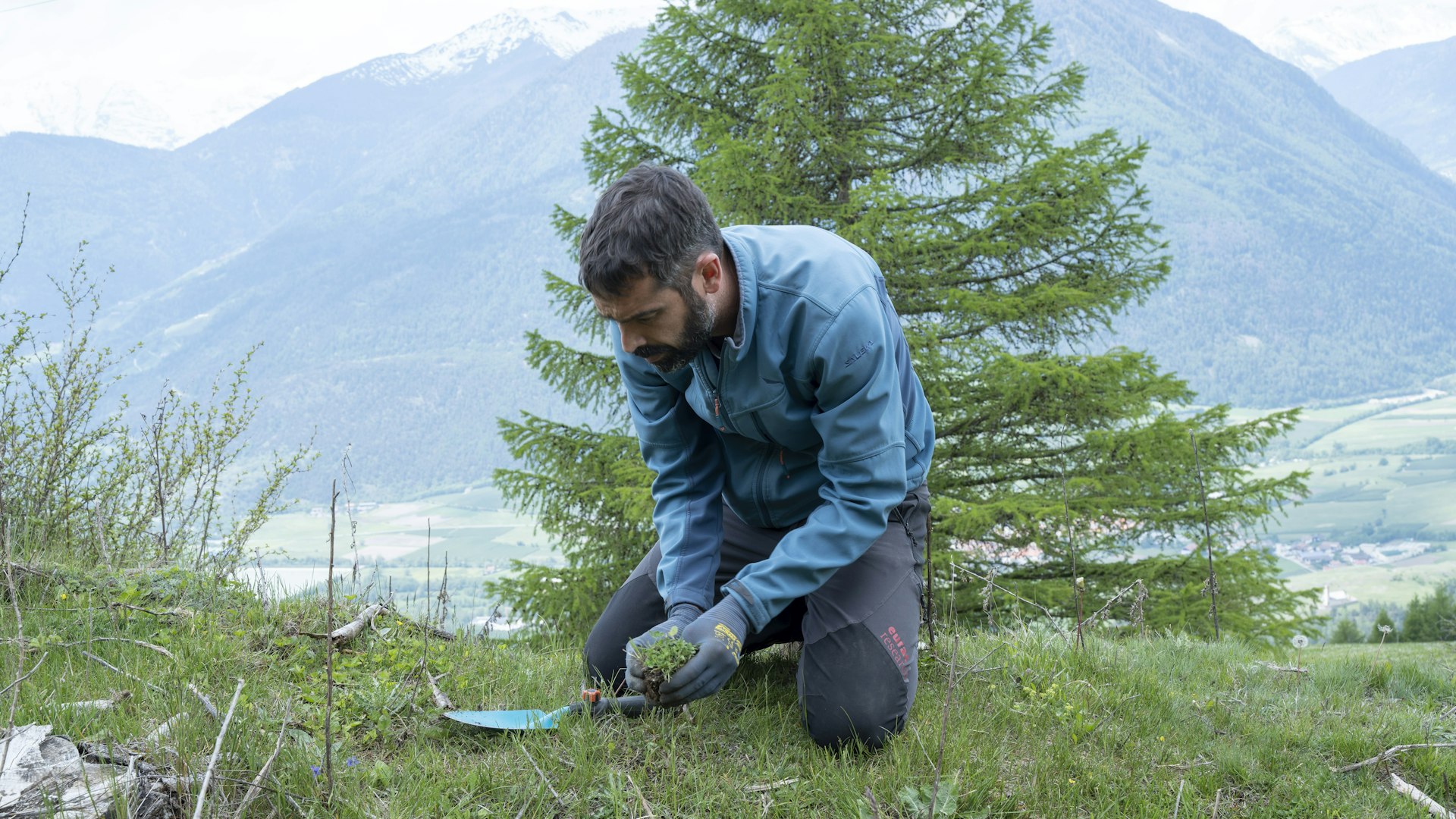 Credit: Eurac Research | Marina Baldo
Credit: Eurac Research | Marina BaldoEcologist Georg Niedrist, Upshift’s coordinator
 Credit: Eurac Research | Marina Baldo
Credit: Eurac Research | Marina BaldoBiologist Silvia Lembo
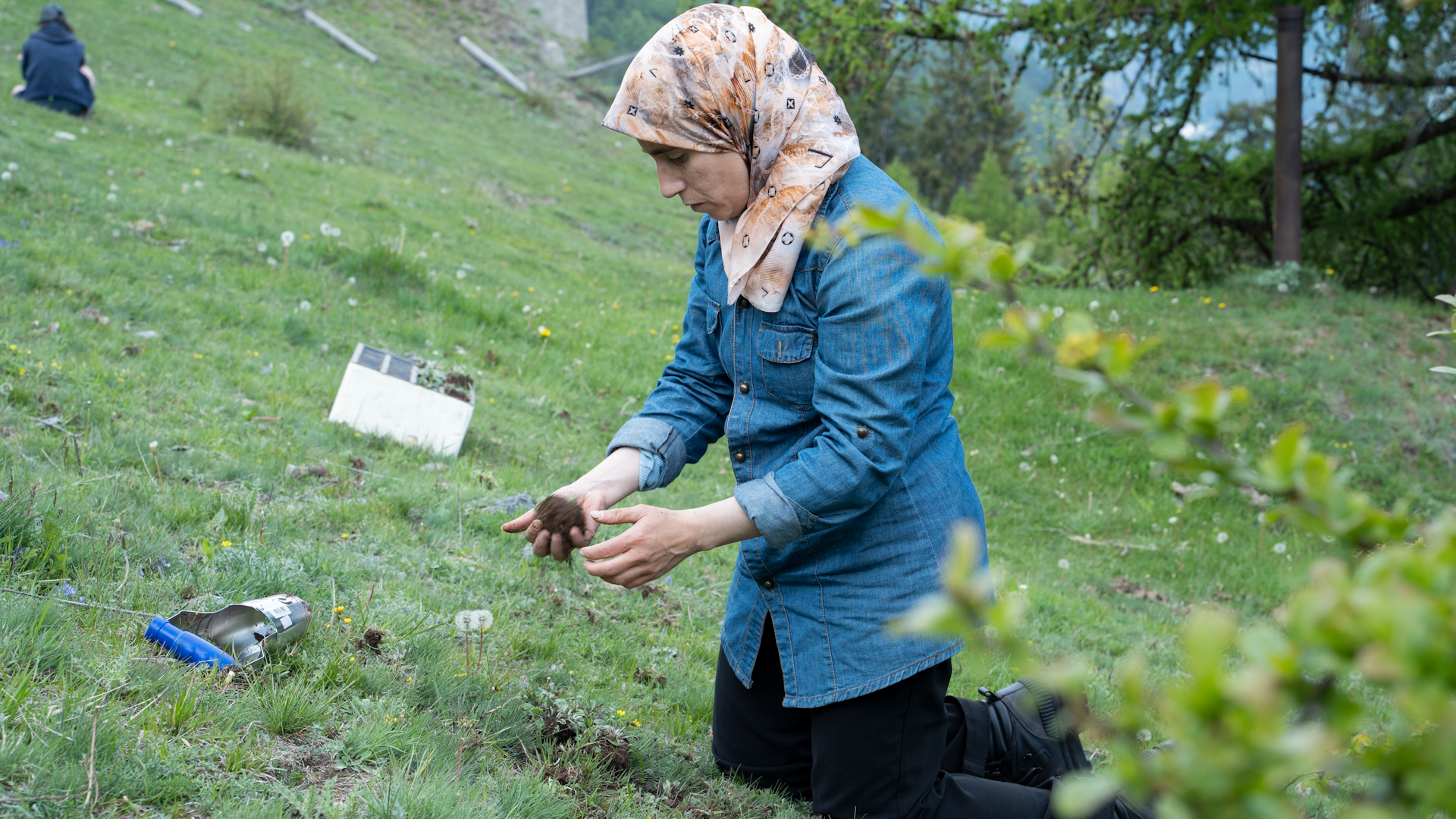
Ecologist Bouchra El Omani
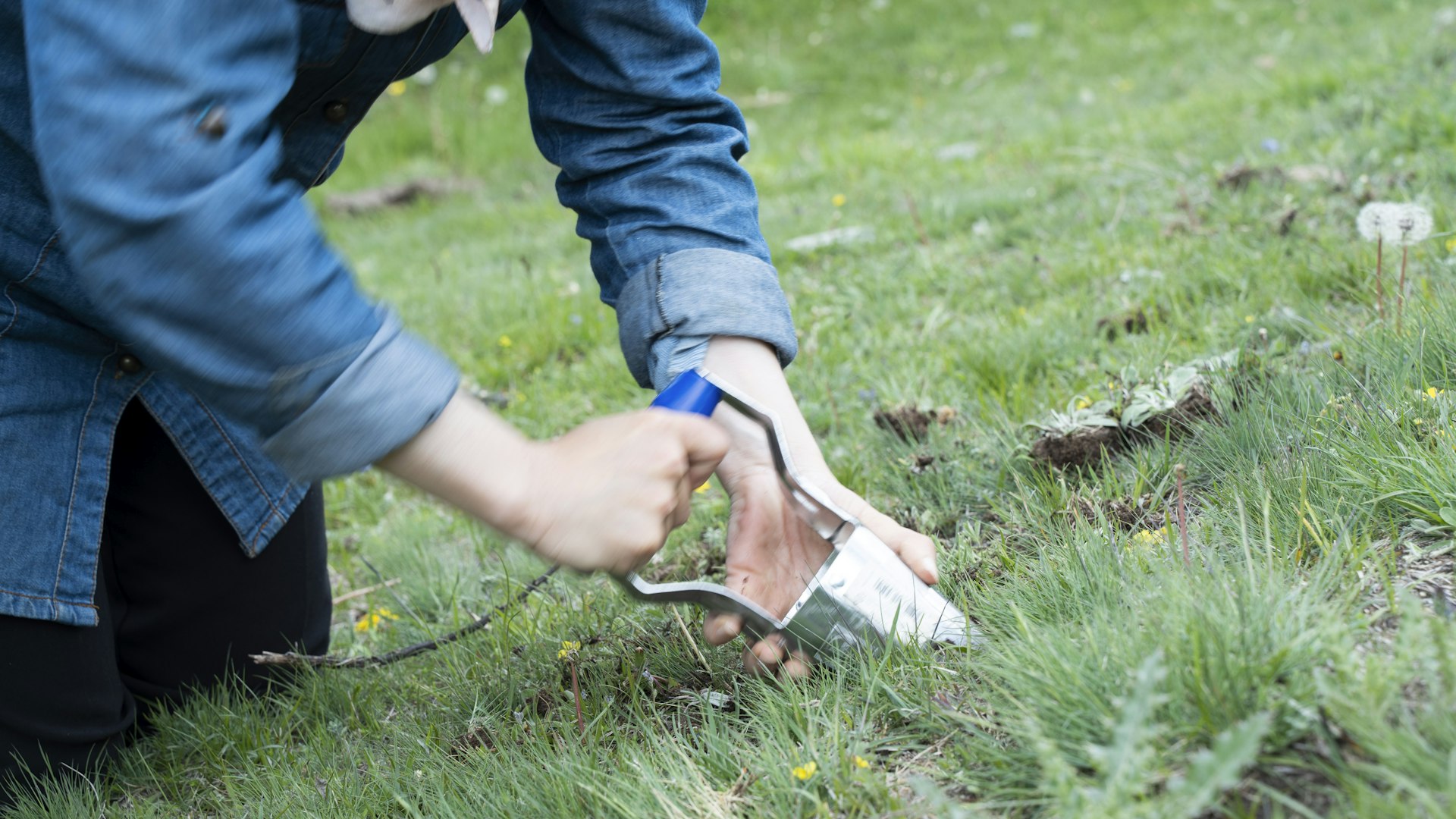 Credit: Eurac Research | Marina Baldo
Credit: Eurac Research | Marina BaldoThe soil is quite hard, and there are several techniques for extracting plant samples. The important thing is not to damage the lawn too much-the holes should be as small as possible and are immediately patted down after the extraction.
To complete the sampling, the group needs another species to accompany the clover: 120 specimens of pilosella (Hieracium pilosella), another hairy seedling that has astringent and purifying properties and whose deep yellow flowers could be mistaken for dandelions. “We have to be especially careful to make sure that the plants we choose are not too close to each other otherwise they may have already entered into competition. This means that one of the plants may have grown faster than the other to assert itself,” points out Bouchra El Omari, a biologist and functional ecology expert. “We check that the plants collected all have similar sized leaves; if the samples are too different, observations are less reliable.” El Omari uses something that resembles a big metal cookie cutter to cut into the soil and extract the plant and the surrounding clod in one piece. The holes left must not be too big so as not to disfigure the lawn and are immediately patted back down.
A curious cow approaches the containers already full of clover seedlings. A researcher moves her with a gentle but firm push to avoid her grazing on the carefully collected specimens. The cows and the plants are part of the same ecosystem, any change to one, will affect the other. If the plants change, what will the cows do? And how will the plants adapt to higher elevations?
“The data we are most interested in is that from the 2,500 m.a.s.l mark, an altitude at which both clover and pilosella are likely to reach in the near future.”
Bouchra El Omari
Studies have observed that over the past 10 years, the climate crisis has already caused vegetation to rise about 50 meters and that over the past 40 years plants have migrated up to 200 meters and have had to undergo changes in temperature, sunlight exposure, carbon dioxide availability and-most importantly lower atmospheric pressure. “The effects of temperature and more intense solar irradiance are fairly well known. However, what changes in pressure will do to plant growth, is still largely unknown,” El Omari explains.
Anyone who has hiked in the mountains knows how breathless you get at elevation and how different breathing can be at 1,500 or 2,500 m.a.s.l ̶ as the pressure decreases so does the oxygen in the air. This is because the column of air above you, gradually becomes shorter and weighs less.
Although there have been several investigations on people’s physiology and adaptation to high altitude, the effects on plants have until now, not been studied. One of the reasons is that plants don’t really move, the other ̶ in nature, it’s impossible to analyze an isolated parameter, for that you need a climate chamber.
This is precisely why, in the civil sector, Upshift is the only project of its kind.
Colleagues Harald and Mario and two students who applied as volunteer assistants following a lecture at the University of Innsbruck help Silvia and Bouchra load the precious cargo onto the pickup truck. The climate journey for the 240 seedlings is about to begin.
A few hours later, in the basement of the terraXcube, Eurac Research’s extreme environment simulator, the plants are potted and connected to an irrigation system. One part undergoes a more invasive treatment: researchers break down the soil cake with the roots, wash them under running water and then repot them using soil taken at 2,500 m.a.s.l, 1,000 meters higher than the altitude where the plants lived in the wild. “We do this to best simulate real conditions,” explains Silvia Lembo as she gently buries the fine roots. “The composition of the soil also changes as the altitude changes.”
As the air changes, so does the soil
A research team from the University of Innsbruck is also collaborating on the Upshift project. Their goal is to observe what happens to microorganisms living in soil from differing altitudes and how they interact with plants.
The combinations to be studied are varied, in some cases communities that are transported to simulated higher altitudes but with the same plants they are used to living with, are investigated. In others, the microorganisms themselves are kept at the same altitude (2,500 meters) but with plants which come from lower altitudes.
Each pot is marked with an acronym written in marker pen; each acronym meticulously written on a chart. Then the seedlings are distributed into the four small climatic chambers of the terraXcube, and the doors close.
The climatic parameters set in the chambers are aligned with those measured in nature at monitoring stations at the LTER site operated by Eurac Research in the Mazia valley.
Each plant is given 30ml of water per day, the temperature varies between a minimum of 12 °C to a maximum of 24 °C and light intensity (dark at night and fluctuating between 10 and 85 percent during the day) is kept the same in all the chambers. The only variable: the pressure which simulates that of 260 m.a.s.l ̶ Bolzano’s altitude as well as altitudes of 1,500, 2,500 and 4,000 m, respectively. “The highest simulated altitude is markedly exaggerated, in nature plants will not migrate that high, but we need it to take the plant’s reactions to the extreme to see what happens,” clarifies Bouchra El Omari. “The data we are most interested in is that from the 2,500 m.a.s.l mark, an altitude at which both clover and pilosella are likely to reach in the near future.”
“Clover saw a decrease in chlorophyll content in the first two weeks and then recovered in the following weeks.”
Silvia Lembo
After a week of settling in, measurements begin to assess how the plants have responded to the stress of change. El Omari, Lembo and colleagues, get to work. Using various instruments, they measure how much the leaves have grown, the chlorophyll content, and vapor exchange with the environment. They then carefully insert the data gathered into the excel table.
During the day, plants “breathe in” carbon dioxide and “breathe out” water vapor. The hypothesis is that the lower pressure at high altitude causes the plants to exhale more water vapor, they are more dehydrated, and their growth is impaired.
 Credit: Eurac Research | Marina Baldo
Credit: Eurac Research | Marina BaldoLast year the working group had already carried out a battery of similar tests, with clover and paléo rupestre (Brachypodium rupestre), a type of grass. “Both species ̶ particularly paleo, have proven to be resilient and hardy. At lower elevations we did not record major changes in any of the altitude parameters except at 4,000 m.a.s.l where we observed a general decrease in biomass. Clover saw a decrease in chlorophyll content in the first two weeks and then recovered in the following weeks at an altitude of 4,000m. ” Lembo says. “However, it is essential to repeat the tests to validate the results, and for the same reason we have placed the plants sampled in the wild, as a control species alongside a greenhouse-grown species: the common Arabidopsis, Arabidopsis thaliana.” And with this Lembo bids us farewell, closing the door of the climate simulator.
Final publication of results is expected by the end of 2024.
